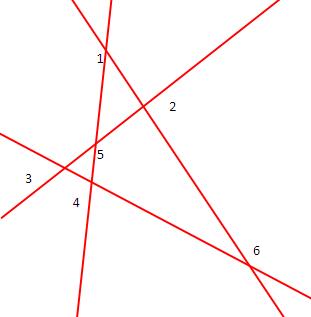errrrr..........i didnt read the question carefully......
Four snails having velocities different in magnitude and direction move in a plane. Out of six encounters possible,five have already taken place. If it is given that the line paths of any three are non concurrent and they move along straight lines with uniform velocity, which of the following is correct?
-
UP 0 DOWN 0 0 11

11 Answers
If the paths of three snails are Straight lines which are not concurrent, then it means that the paths are all parallel. Hence if the fourth snail crosses them using a straight line path, 5 encounters are not possible at all. The maximum encounters is 3.
Either the solution is wrong, or the information in the question is incorrectly written.
no the ans is correct because if lines are not concurent it means atmost only 2 lines can intersect hence u will find that they can intersect only in 6 way provided they arn't parallel hence they r parallel is also be included in the question
If 5 encounters have taken place,the only way of motion is summat like dis............

This shows that, sixth encounter is possible, and certain, though not obvious...........
If I am not widely mistaken, we hav one such question in the only (2nd nt out yet [2])edition of reflections
[339]
seriously speakin even 5 encounters r not possible.coz 3 of them r not concurrent n dats y even 5 r not possible.
I proved it using vectors that sixth collision is impossible.Take pv's of s1 and s2 w.r.t. s3(s1 and s2 encounter s3).put(v1-v3)t1=-x1(vectors) and (v2-v3)t2=-x2.For common encounter of s1 ad s2,(v1-v2)t=x2-x1 which is possible only if t1=t2,but 3 s are not concurrent simultaneously,so answer is(a)
Visit www.anujkalia.blogspot.com for your daily powerful physics problems. These are neither easy nor too difficult. I bet you'll love them.
P.S.
1)Sorry for (something like) spamming.
2)The blog has been around for an year now. That gives you about a 100 thumping good problems if you scan the archives.
3)Try the blog. I would have.
4)Hi Anirudh:
The volume rate of removal of the tape is constant (assume this). Now, loss in volume in the 2nd case is 1/4 of the volume loss in the 2nd case. This yields the answer 1/4*t.